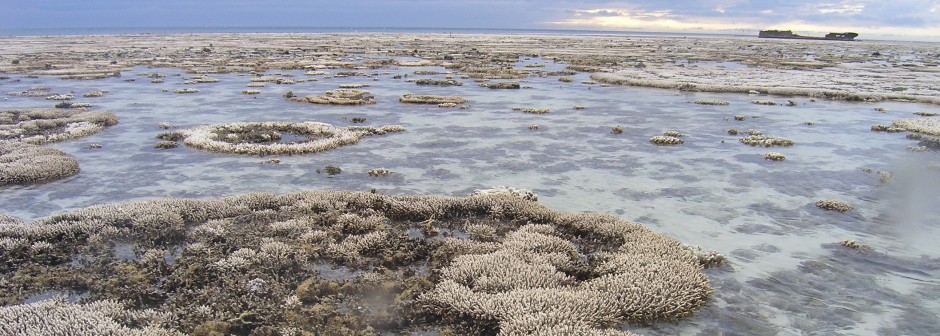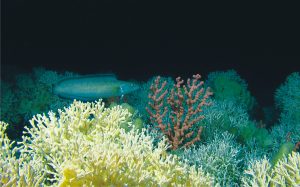When you think of coral reefs, you probably think of a tropical locale with white sand beaches and warm waters which contain a colorful array of coral species, home to a diverse group of fish, algae, sponges and more. But what if I told you that sometimes you have to dig, or rather swim a little deeper to get to some of the more interesting reefs the ocean has to offer? I’m talking of course (if you read the title), about deep water reefs.
You may have inferred that deep (also known as cold) water reefs, are reefs that form in deeper or colder waters than typical warm, shallow reefs, but the difference can be pretty striking. While shallow water reefs can go from the shore to about 65m (~200ft), deep water corals are generally found between 50-4000m (~150-13,000ft)¹. So while shallow water reefs are limited to depths where the light can support photosynthetic activity, these deep water habitats go all the way to what’s known as the Abyss Zone of the ocean, a place shrouded in total darkness¹².
So what makes these reefs different? Well first of all, the stony coral species that construct these deep reefs are azooxanthellate, which means they’re lacking the microscopic algae that use photosynthesis to produce organic molecules needed for the shallow water coral to live. The deep water coral make up for this by filtering out plankton and other microorganisms out of the water to provide them with the nutrition they need without sunlight. While living without the necessity of relying on other organisms for help might sound handy, it isn’t easy. For one, while there are over 800 reef building stony corals that thrive in warm shallow waters, only 10 have been found that can survive in the depths of deep water reefs. All 10 species are not created equal however, and a branching coral known as Lophelia pertusa often dominates deep water sites¹³.

Lophelia pertusa reef. Lack of photosynthetic algae causes coloration from bone white to orangish brown. High branching creates complex habitats. © C. Dullo, IFM-GEOMAR
http://2014.extrememarine.org.uk/theunfathomabledeepmarineenviroment/introduction/index.html
While you might think L. pertusa is overwhelming the competition with a high capacity to proliferate, it actually has a slow growth rate characteristic of deep water corals due to the cold temperatures and lack of photosynthetic assistance, and averages between 4-20mm (.16-.79in) per year. In contrast, shallow water corals can grow up to 10cm (4in) per year, (relatively) quickly building up reef structures. Despite this, L. pertusa, is responsible for many of the large deep water structures scattered around the world. Large structures such as the Darwin Mounds and Porcupine Seabight near the UK and Sula Ridge in Norway can form reefs 300m high that stretch for kilometers. These complex structures are built up over thousands or even millions of years of slow reef growth. These ever changing geologic and biologic marvels can be used to provide great insight into ocean conditions in past millennia and are great homes to many diverse ocean creatures, from sharks to sponges, which is why they should be preserved ¹³°.
Like many parts of our natural world today, these deep sea habitats are threatened by human action. Physical destruction from fishing trawlers and deep sea oil drilling, and slowing of growth processes due to large scale ocean acidification are destroying these complex and diverse habitats. In order to keep these intact to preserve ocean life and find more out about what conditions were like millennia ago, we need to protect these delicate environments.
¹Roberts JM (2006) Reefs of the Deep: The Biology and Geology of Cold-Water Coral Ecosystems. Science 312:543–547.
²http://192.171.193.68/assets/pdf/marine_healthcheck05.pdf#page=75
³Sheppard C, Davy SK, Pilling GM (2012) The biology of coral reefs. Oxford University Press, Oxford.
°Rogers AD (1999) The Biology of Lophelia pertusa (Linnaeus 1758) and Other Deep-Water Reef-Forming Corals and Impacts from Human Activities. International Review of Hydrobiology 84:315–406.


